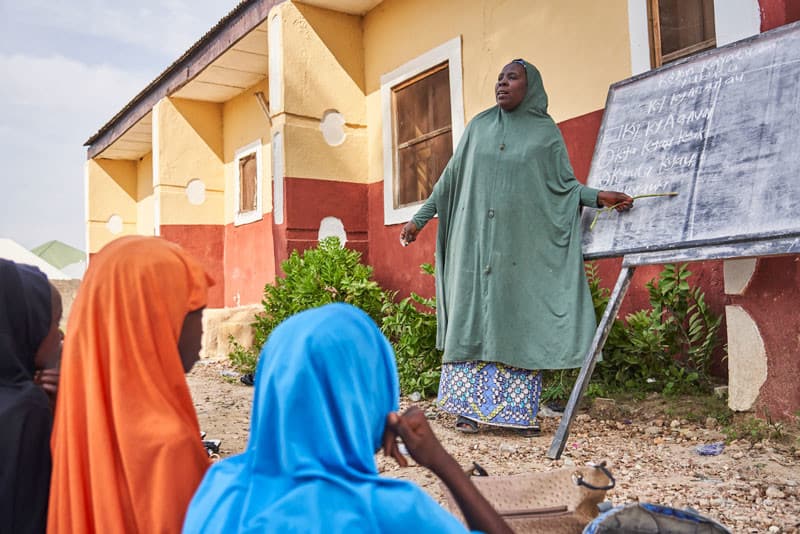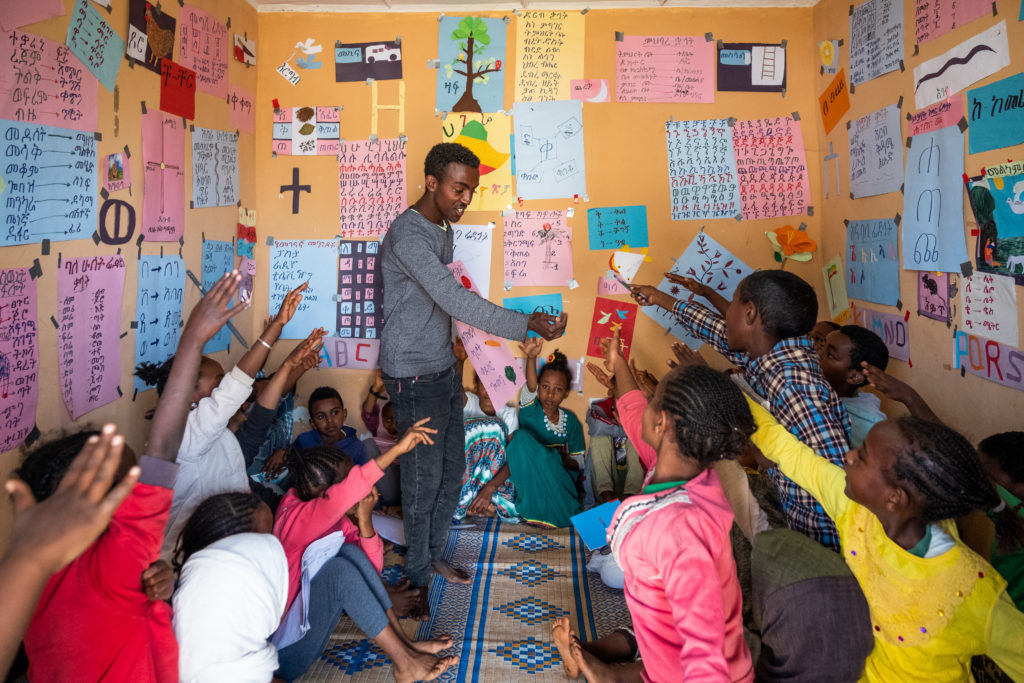When designing and implementing solutions for sustained growth, development programs depend on a strong foundation that brings together clear plans, stakeholder engagement, policy frameworks and many other strategies. Regardless of the duration, size and scope of a program, it should be geared towards sowing the seeds for sustained growth, allowing others that follow it to build on its accomplishments.
At the center of this foundation are the communities the program seeks to serve. Approaching programming with a community-anchored approach is a crucial piece in ensuring a program’s success.
Only by collaborating with communities can development professionals uncover facts, disprove assumptions and validate a theory of change.
No one is better placed to characterize the local situations, pinpoint problems, single out priorities, and identify local solutions to local problems in an effective way than the community itself. Communities know what works for them, how interventions can advance their own strategic interests and how to work efficiently in the local context. Community-driven development projects usually deliver public investments to poor people faster, cheaper and better. Building trust matters if this partnership is going to work.
These conversations will pave the way for a stronger partnership that responds to the real (not assumed) needs and aspirations of local communities.

In Nigeria, the USAID-funded Northern Education Initiative Plus (NEI Plus) has engaged communities to expand education opportunities for tens of thousands of students. The project aims to strengthen the capacity of governments in two states to provide greater access to basic education — especially for girls and out-of-school children — and to significantly improve reading outcomes for school-aged children and adolescents. One piece of its holistic approach is the establishment of non-formal learning centers that serve students not enrolled in the formal school system.
Non-formal education has long been instrumental in addressing the educational and psycho-social needs of out-of-school children and adolescent girls. For NEI Plus, what stands out is the extent to which the project has put the communities at the center.
This community-based effort starts with a thorough mapping exercise in collaboration with community structures (both traditional and contemporary), local government entities, and local civil society organizations to get to know where the need is most felt. Once a community has been identified to host a non-formal learning center, the project consults with community members and leaders to:
- Identify who should be enrolled in this center with an emphasis on girls’ enrollment
- Determine the location of the center giving due consideration to safety issues
- Determine the type of infrastructure (temporary structure, classroom, tent, religious institution compound, etc.)
- Identify who should serve as the teacher or learning facilitator and set criteria for their selection
- Select members of the Center-based Management Committee (CBMC)
- Specify which days of the week and hours (for example, taking into consideration market days, harvest seasons or religious occasions) are suitable for children to attend
- Identify local craftspeople who could train students on in-demand labor skills in their locality
- Determine the community’s contributions to the center, which includes in-kind and monetary support and monitoring
This process ensures that centers are ready to operate successfully and generates a sense of ownership and responsibility among the community. NEI Plus has established 5,600 non-formal learning centers across Bauchi and Sokoto states with a student population of around 270,000.
Facilitating these important conversations are Community Coalitions, which are instrumental in bringing together diverse interest groups such as community and faith-based organizations, traditional and religious leaders, prominent personalities in the localities, and representatives of women and youth groups. NEI Plus established 20 Community Coalitions to drive engagement and create a platform for leaders to advocate and provide for the needs of out-of-school children and adolescent girls.

Community partnership and leadership is also expanding access to educational opportunities in Ethiopia. The USAID-funded READ II program aims to improve the reading proficiency of 15 million children by boosting the quality of literacy instruction and student support. There, communities are similarly mobilized around local reading camps, which are led by youth volunteers. READ II, in collaboration with seven local NGOs, has mobilized 11,656 youth volunteers, called Community Literacy Leaders, and established 5,938 reading camps across the country. Click here to take a 360-degree tour of a reading camp.
An outreach campaign mobilized communities to promote a culture of reading. In addition to identifying youth volunteers, local communities have succeeded in providing space, making in-kind contributions, and maintaining the camps. The camps have become fun and engaging spaces for children to practice reading outside of school with the support of facilitators.
Outside of education, community-anchored development can strengthen economic growth and expand opportunity. Access to financial institutions is a major hurdle for many communities and individuals, and for women in particular. The Bangladesh Rural Advancement Committee (BRAC) leads grassroots-level interventions that promote community engagement and ownership in strengthening women’s economic opportunity and engagement. BRAC takes a business approach to ending poverty, using social enterprise models to recover costs and accelerate impact at scale.
Through this model, people excluded from the formal banking system (due to lack of assets that usually make people eligible for loans) can access a myriad of financial services such as credit, savings and microinsurance products with the support of microfinance. This practice creates a suitable environment for families to build assets and reduce vulnerability to shocks such as health emergencies or natural disasters amongst others. Collateral-free loans are released exclusively to individual women through a group setting, known to BRAC as village organizations.
This platform, comprising 15 to 25 women, helps them come together to deposit their installments and savings, share information and improve financial awareness through training and market support. Using this mechanism, BRAC has succeeded in impacting the lives of 5.6 million active borrowers (87 percent of whom are women) by disbursing $4 billion in 2018. For these women, this has been a life-changing opportunity.
From a much broader developmental perspective, beginning with an anchor in the community is vital to advancing on the journey to self-reliance. When development goals — in education, economic growth, health, and more — are so interconnected, strong community roots ensure programs can complement one another and meet the real and present needs of the people they serve.
Without listening to the poor, we can’t alleviate poverty; without listening to the uneducated, we can’t expand education. For projects to be effective and sustainable, communities should be brought to the center. It is not an option, but a requirement.
Semere Solomon is a Senior Director with the Africa Center at Creative Associates International.

